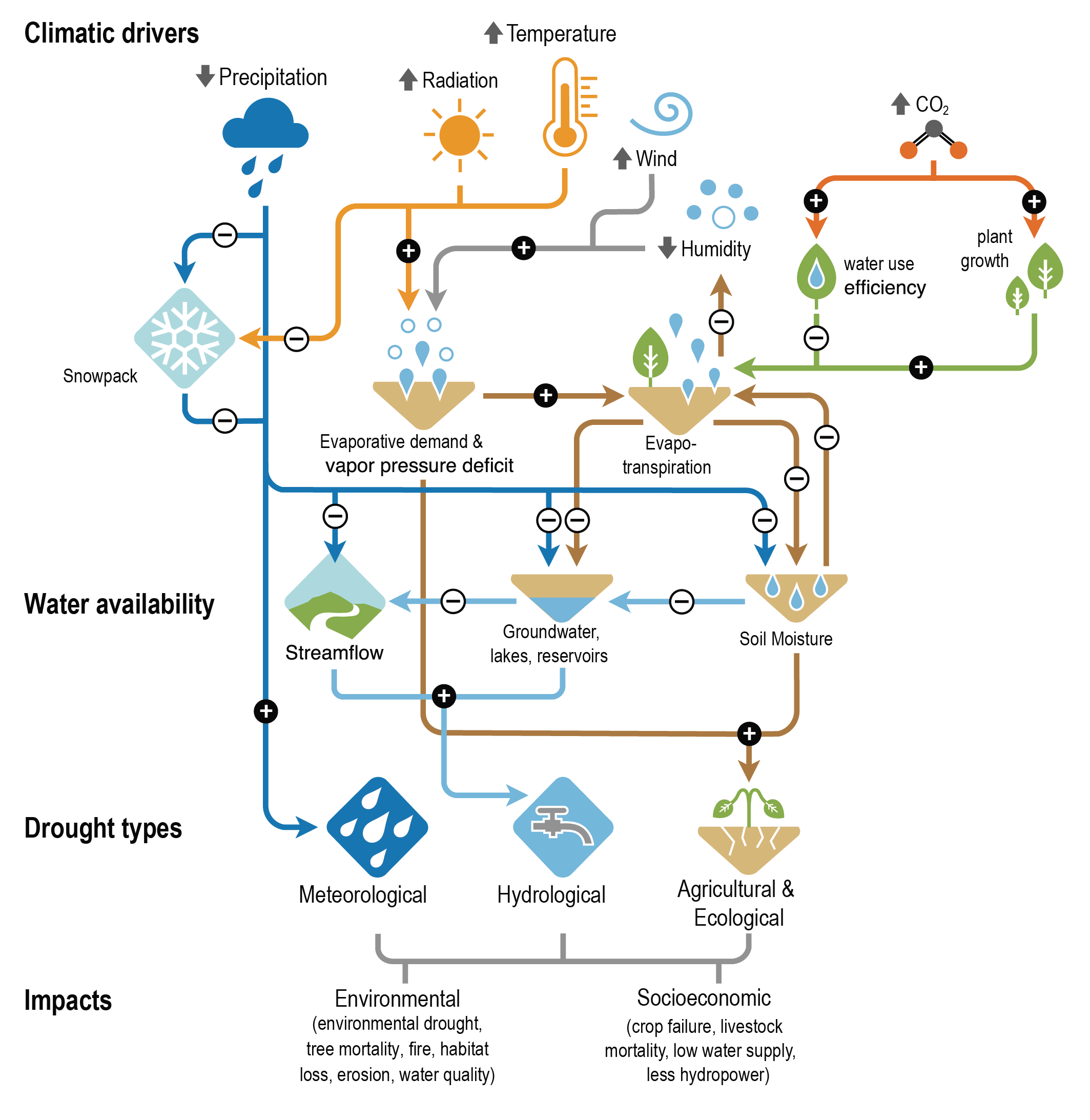Drought
Drought, broadly defined as a temporary deficit in water availability, is one of the most important and disruptive climate hazards to societies and ecosystems around the world. However, drought is a complex phenomenon, sensitive to a diverse array of physical and biological processes and sitting at the intersection of climatology, hydrology, and ecology. In my work, I use evidence from the paleoclimate record, historical observations, and climate model simulations of the past and future to improve our mechanistic understanding of drought dynamics, including how drought risk and severity will change in a warming world.
Graphic: IPCC AR6, WG I Report, Chapter 8
Highlighted Work
“Megadroughts in the Common Era and Anthropocene”, Cook et al (2022), Nature Reviews Earth & Environment, doi: https://doi.org/10.1038/s43017-022-00329-1
“Rapid Intensification of the emerging southwestern North American megadrought in 2020-2021”, Williams et al (2022), Nature Climate Change, doi: https://doi.org/10.1038/s41558-022-01290-z
“Uncertainties, limits, and benefits of climate change mitigation for soil moisture drought in southwestern North America”, Cook et al (2021), Earth’s Future, doi: https://doi.org/10.1029/2021EF002014
“Twenty-first century drought projections in the CMIP6 forcing scenarios”, Cook et al, (2020), Earth’s Future, doi: https://doi.org/10.1029/2019EF001461
The Land Surface in
the Climate System
Graphic: “Forests and Climate Change: Forcings, Feedbacks, and the Climate Benefits of Forests”, Bonan (2008), Science
Land surface and terrestrial vegetation processes are critically important components of the climate system, but are often coarsely or poorly represented within climate models. Consequently, these represent some of the most important uncertainties within climate model projections. I use new and existing climate model simulations to directly interrogate the importance of different terrestrial processes on regional and global climate. These include both natural ecosystems (e.g., how CO2 affects plant drought responses and feedbacks), as well as the importance of human land use and management (e.g., irrigation, erosion) as another forcing affect climate and hydrology.
Highlighted Work
“Irrigation in the Earth system”, McDermid et al (2023), Nature Reviews Earth & Environment, doi: https://doi.org/10.1038/s43017-023-00438-5
“Soil carbon losses reduce soil moisture in global climate model simulations”, McDermid et al (2022), Earth Interactions, doi: https://doi.org/10.1175/EI-D-22-0003.1
“The Efficacy of Seasonal Terrestrial Water Storage Forecasts for Predicting Vegetation Activity over Africa”, Cook et al (2021), Journal of Hydrometeorology, doi: https://doi.org/10.1175/JHM-D-21-0046.1
“Disentangling the Regional Climate Impacts of Competing Vegetation Responses to Elevated Atmospheric CO2”, McDermid et al (2021), Journal of Geophysical Research-Atmospheres, doi: https://doi.org/10.1029/2020JD034108
“Divergent regional climate consequences of maintaining current irrigation rates in the 21st century”, Cook et al (2020), Journal of Geophysical Research-Atmospheres, doi: https://doi.org/10.1029/2019JD031814

